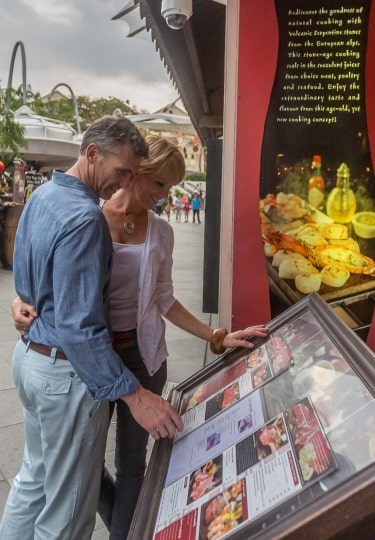The best food in Singapore is nothing short of sensational. It has often been said that Singaporeans live to eat, rather than eat to live. The enjoyment of food is profoundly central to both daily life and national identity here.
Nowhere is the Lion City’s multicultural history more evident than on the plate. Chinese, Indian, and Malay influences can all be seen in the cuisine here. Dishes here tend to maximize flavor with an abundance of fresh herbs, dried spices, and plenty of bright acidity, plus a touch of heat.
Part of what makes Singapore food such a joy to explore is that there are delicious dishes at all levels of dining here. This city-state boasts a galaxy of Michelin stars and fine dining establishments. Nevertheless, locals will tell you that some of the best food resides in humble hawker centers. Here are just a few of the dishes to try in Singapore.
Chili Crab
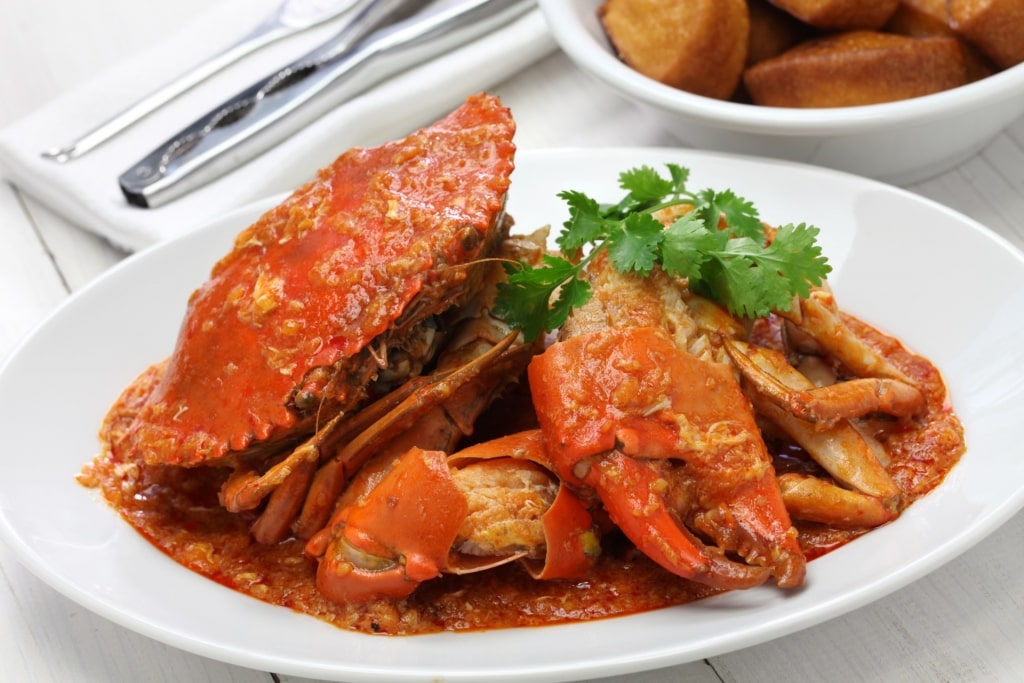
Chili crab
This Singaporean national dish is not one you’d want to order on a first date. Part of the primal joy of chili crab is just how messy it is to eat. Many restaurants provide plastic gloves for easier cleanup. When you order this, expect to receive a heaping platter of shell-on crab swimming in a sweet, spicy sauce.
Mud crabs are typically the crustacean of choice, although high-end restaurants may substitute Dungeness or other pricey, imported crabs. Mantou, or steamed buns, are served on the side and perfect for dunking.
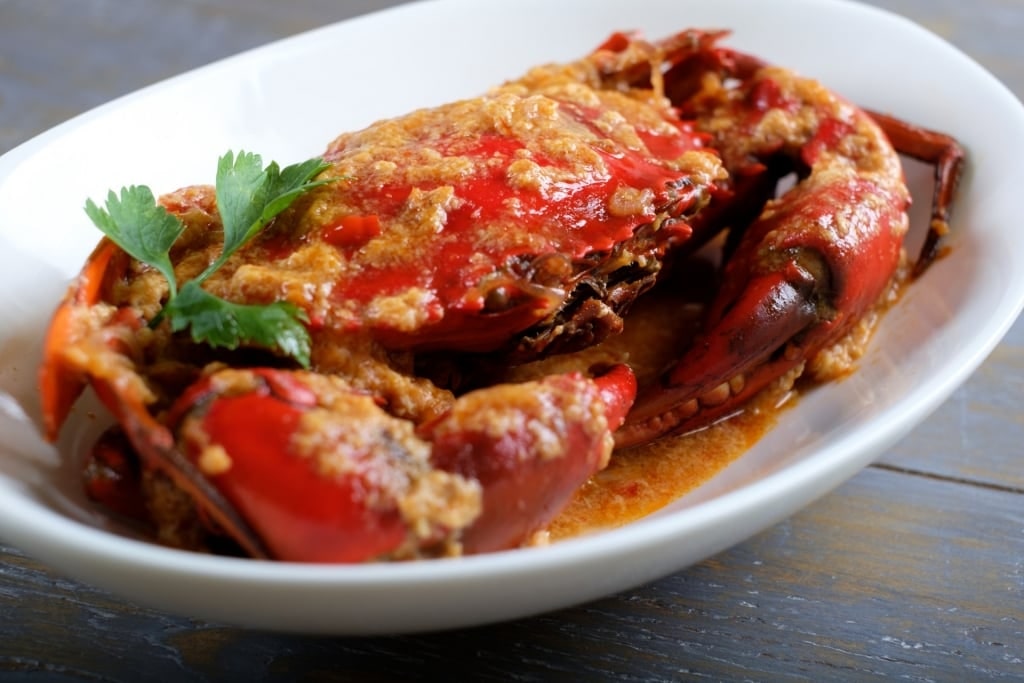
Chili crab
Like many dishes commonly associated with Singapore, this one has Malaysian roots. No one knows quite who invented it, but it first started appearing in the mid-20th century. Today, it’s justly celebrated and found in every hawker center.
Kaya Toast
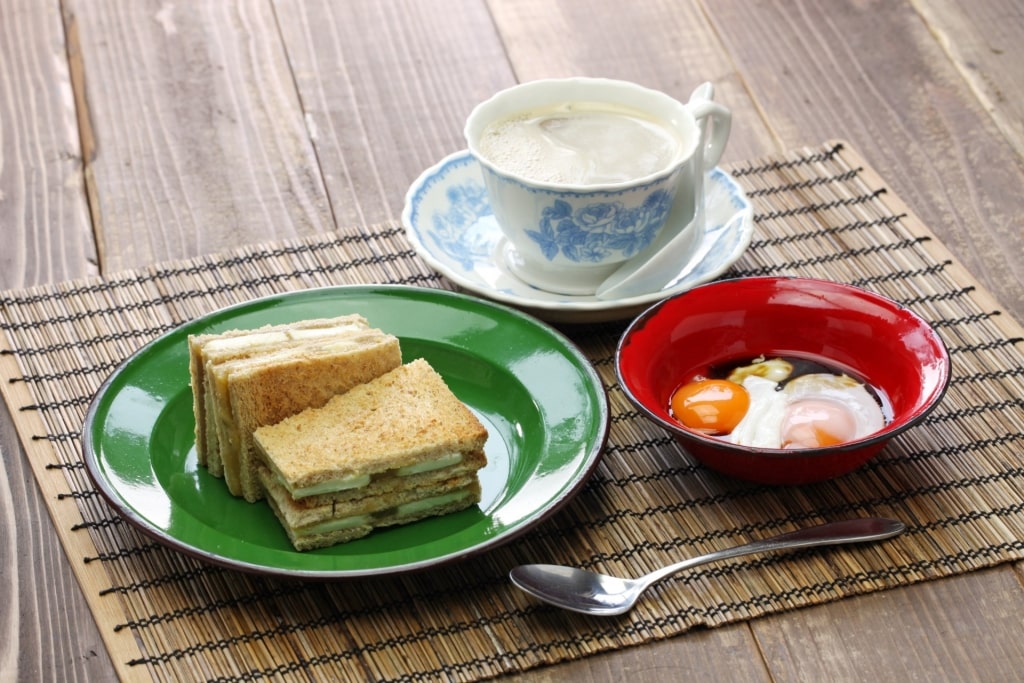
Kaya toast
The best food in Singapore to start your day off right is toast slathered with kaya. This lusciously sweet jam is made with coconut, sugar, and eggs. The mixture is cooked down until thick, rich, and lightly caramelized.
Pandan leaves are what give this spread both its fragrance and distinctive green color. To the uninitiated, pandan smells vaguely reminiscent of vanilla mixed with pine.
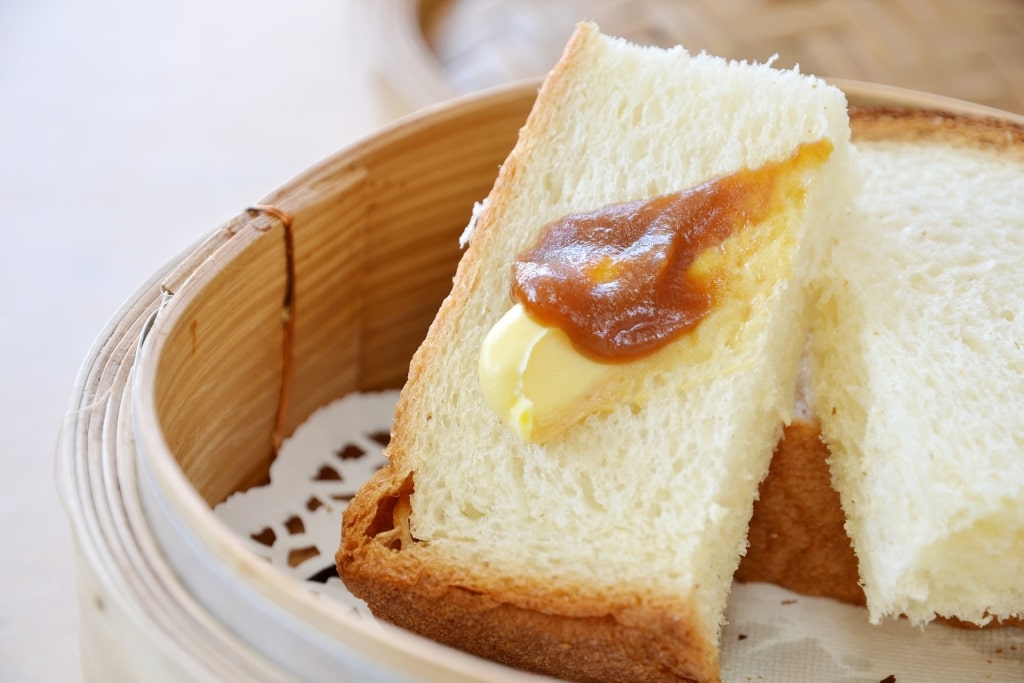
Kaya toast
As with anything made with so few ingredients, a good kaya toast relies heavily on the quality of each one. The best renditions start with slices of fluffy, lightly toasted white bread slathered in butter, although margarine is also common, then topped with a generous layer of kaya.
Usually, the jam is sandwiched in the middle, although some cooks also serve it open-face. Pair it with a soft-boiled egg or two and a cup of strong kopi (coffee), and you have a perfect morning.
Hainanese Chicken Rice
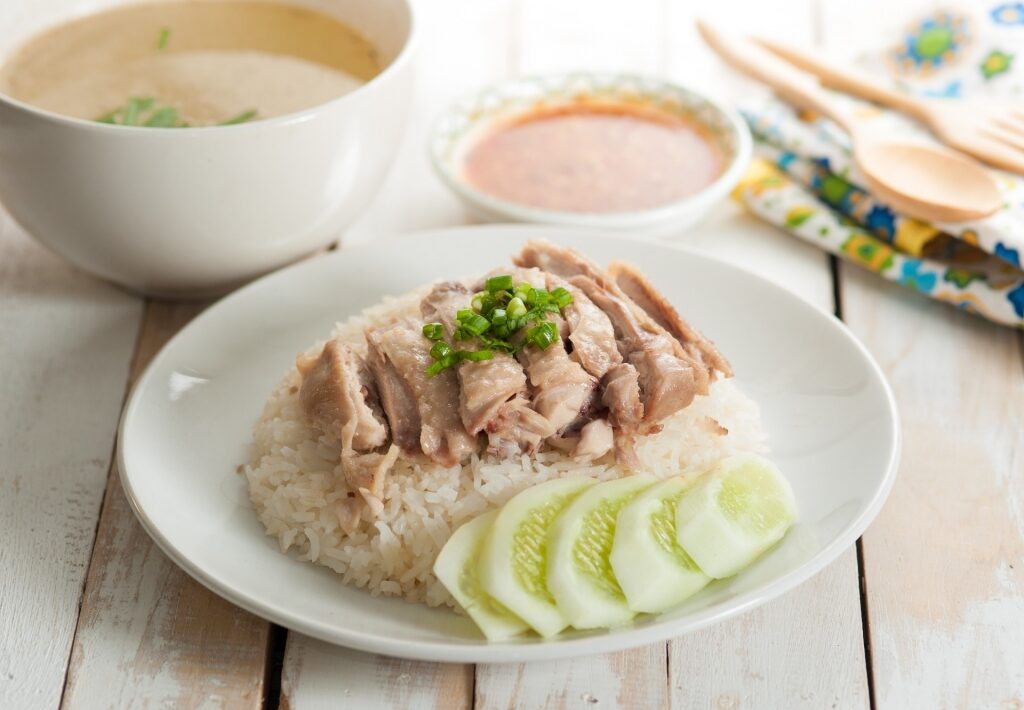
Hainanese chicken rice
This revered dish is a study in the power of minimalism. At first glance, a plate of poached chicken and steamed rice, with perhaps a sliced cucumber for garnish, looks impossibly simple. But Hainanese chicken is all about the details.
The bird should be flavorful, free-range Wenchang chicken, with jelly-like skin and gently poached meat. The rice should be slicked with chicken fat and aromatic with ginger. A modest drizzle of pungent, garlicky soy-based sauce rounds it all out.
Although Hainanese chicken rice is often held up as one of the national dishes of Singapore, variations can be found throughout Malaysia, Thailand, Cambodia, and China. The best versions in Singapore draw long lines and even earn Michelin stars.
Fish Head Curry
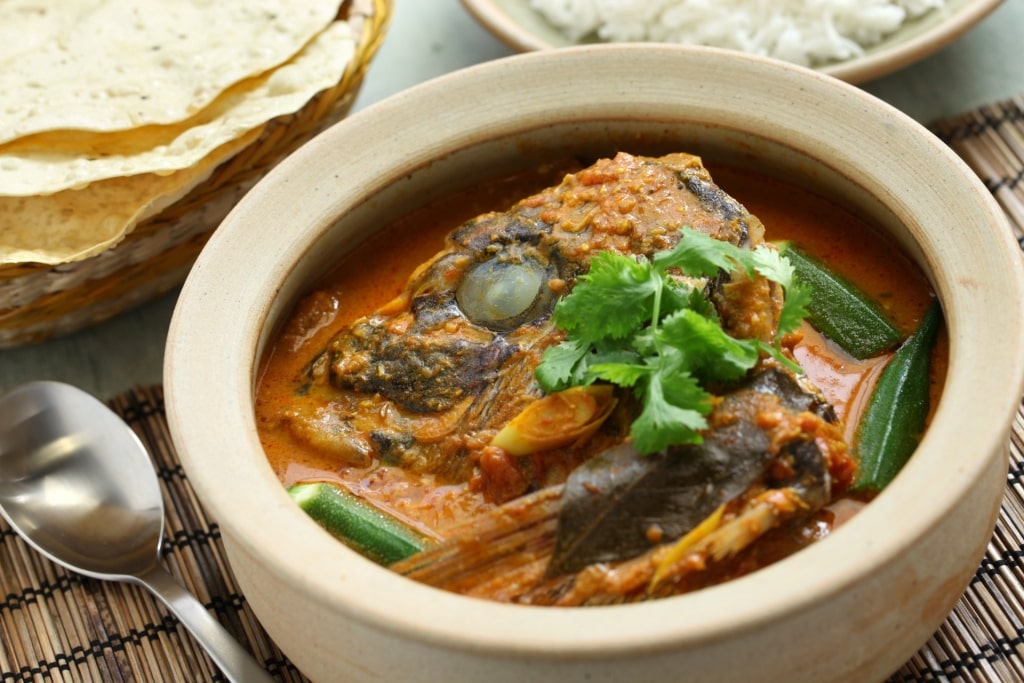
Fish head curry
With its roots in Singapore’s southern Indian community, fish head curry is emblematic of what makes this city’s gastronomic melting pot so great. M.J. Gomez, who immigrated from the Subcontinent, first sold the dish from his hawker stall in 1949.
He used dried spices from his homeland to season fish head, an ingredient commonly used by the local Chinese community. The dish evolved during the 1950s, as chefs like Hoong Ah Kong created their own signature variations.
Today, fish head curry can be found throughout Singapore, but is especially common in Little India. Individual spice mixtures for the rich gravy vary quite a lot and are often closely guarded secrets by chefs. While the whole thing is delicious, the sweet, tender fish cheeks are especially prized.
Laksa
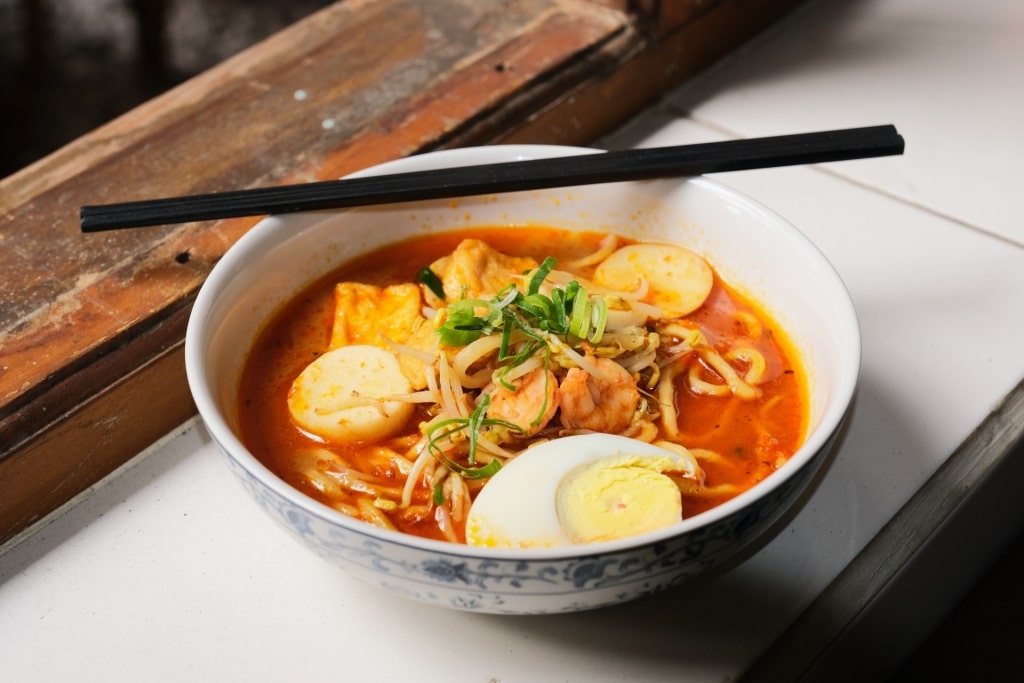
Laksa
When it comes to global comfort foods, this steaming, lusciously creamy bowl of noodles has to rank right near the top. Laksa owes its wonderfully nuanced flavor to a spice paste of laksa leaves, shallots, chiles, galangal, lemongrass, and dried prawn paste. All of this mingles with rich coconut cream and fish stock for a deeply satisfying broth.
While the spiced broth and rice noodles are non-negotiable, plenty of cooks get creative with their toppings and seasonings. Everything from cockles to quail eggs are fair game here, although prawns and other seafood are particularly common.
Regional variations around Malaysia and Singapore abound. Part of the beauty of laksa lies in its diversity. Ask a dozen Singaporeans who makes the best bowl and you may get 12 different answers.
The Singapore Sling

Raffles Hotel
According to popular mixology lore, Ngiam Tong Boon, a bartender at the Long Bar at the swanky Raffles Hotel Singapore first invented the Singapore Sling in 1915. Legend has it that the savvy bartender wanted to create a drink for fashionable ladies.
At the time, it was frowned upon for respectable women to be seen downing glasses of whisky. The Singapore Sling, however, looked just like a glass of fruit juices.
As with most cocktail origin myths, this one may very well not be true. Cocktail historian David Wondrich has found references to slings as early as 1897. Regardless of who invented it or when, this blush-pink drink remains a fixture at watering holes around town.
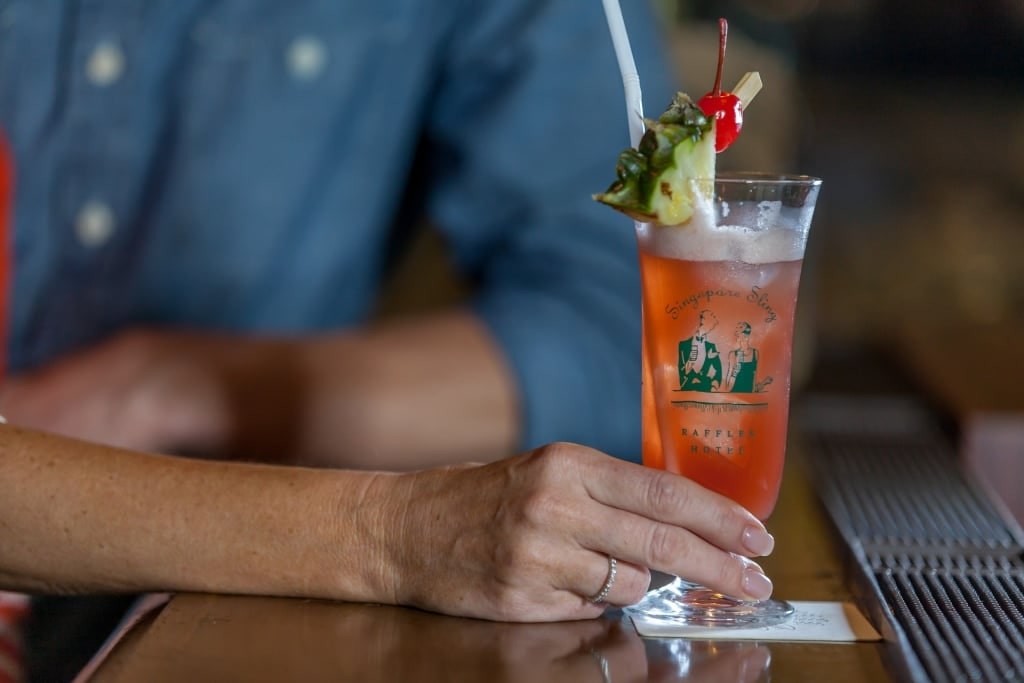
Singapore Sling
Recipes vary, but tend to include gin, Benedictine, as well as orange and cherry liqueur. Bitters add balance and grenadine provides the distinctive coloring. An extravagant garnish of fresh fruit and a maraschino cherry adds a particularly festive touch.
A word of caution though: Singapore Slings may taste sweet, but they tend to pack a real punch.
Read: Things to Do in Singapore for Couples
Char Kway Teow
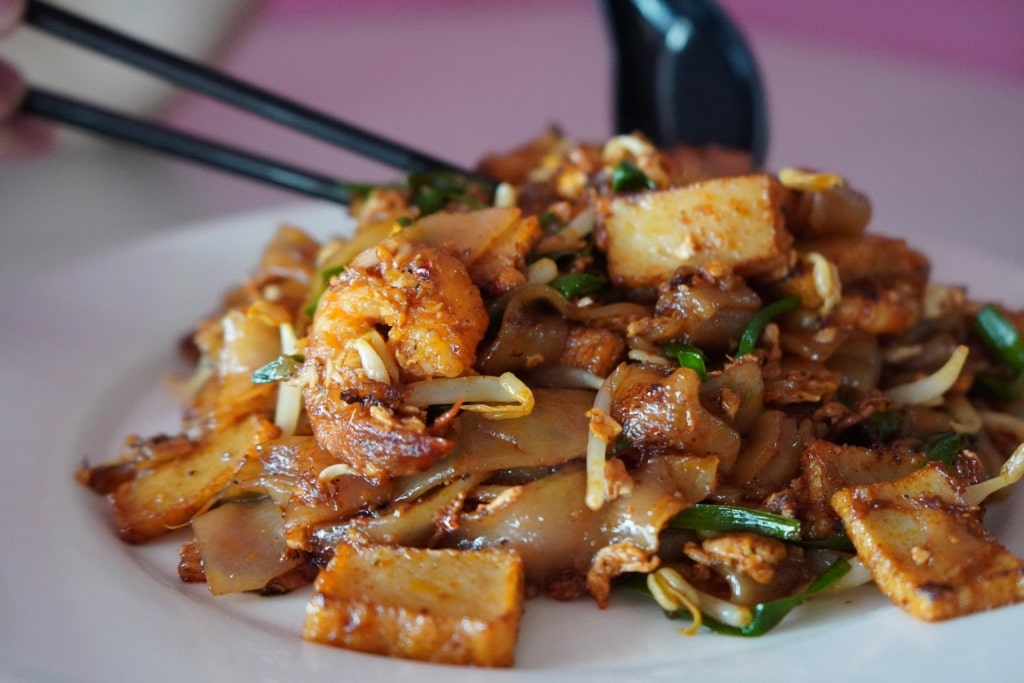
Char Kway Teow
One of Malaysia’s most popular hawker dishes is also a staple throughout Singapore. While char kway teow is very much its own entity, it’s possible to trace its roots to immigrant communities from southern China who settled around Southeast Asia.
Simply translated from Hokkien dialect, the name means “stir-fried rice noodles,” although that hardly describes the incredible array of textures here.
Chewy, springy rice noodles get a burst of smoky flavor here known as wok hei from a stint over live fire. A sticky, sweet soy-based sauce caramelizes during the cooking process.
From there, chefs can add Chinese sweet sausage, cockles, fishcakes, and various other seafood or meats. Beansprouts, eggs, chives, leafy vegetables, and a healthy amount of garlic round the whole composition out.
Hokkien Prawn Mee
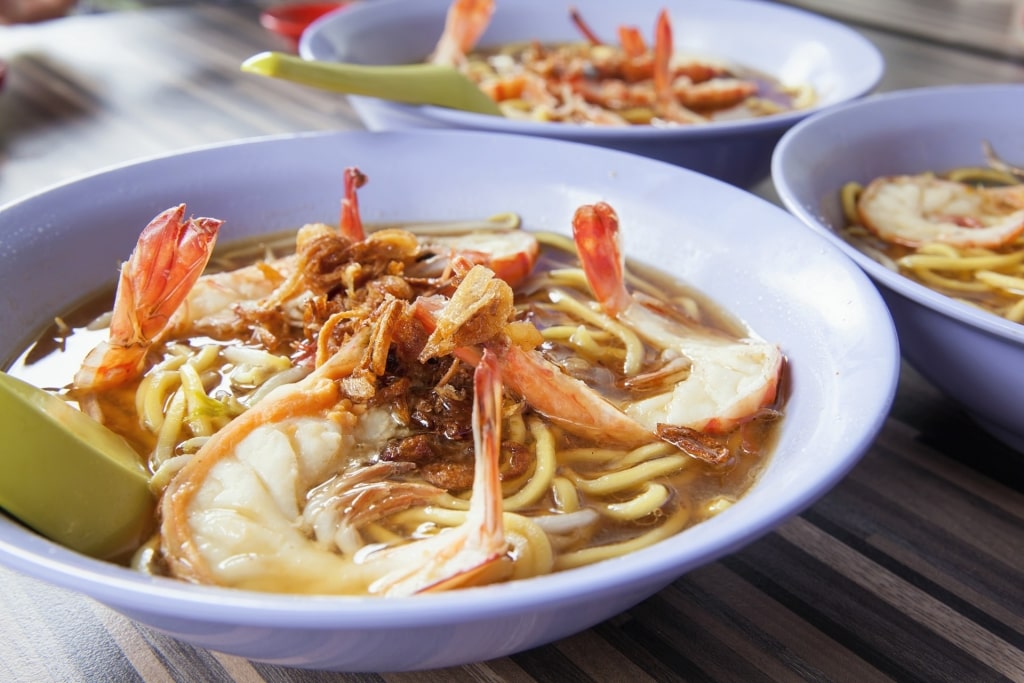
Hokkien prawn mee
Often characterized by a large, head-on prawn bobbing in the center of the bowl, this variation of Hokkien mee is one lavish bowl of noodles. The term Hokkien mee simply means “Hokkien noodles” and refers to Singapore’s southern Chinese immigrant community.
These yellow noodles swimming in a chili-spiked broth can be found throughout Singapore and Malaysia.
They also vary enormously depending on the restaurant or hawker serving them. Pork ribs, pork belly, squid, fish cakes, hard-boiled eggs, and ground peanuts are all popular toppings. Prawns are sometimes swapped for smaller shrimp here as well.
What really sets superior versions apart is the quality of the stock used. The best chefs simmer theirs for hours, using a mix of prawn head and pork bones for a rich mouthfeel and tons of umami in every bowl.
Char Siu
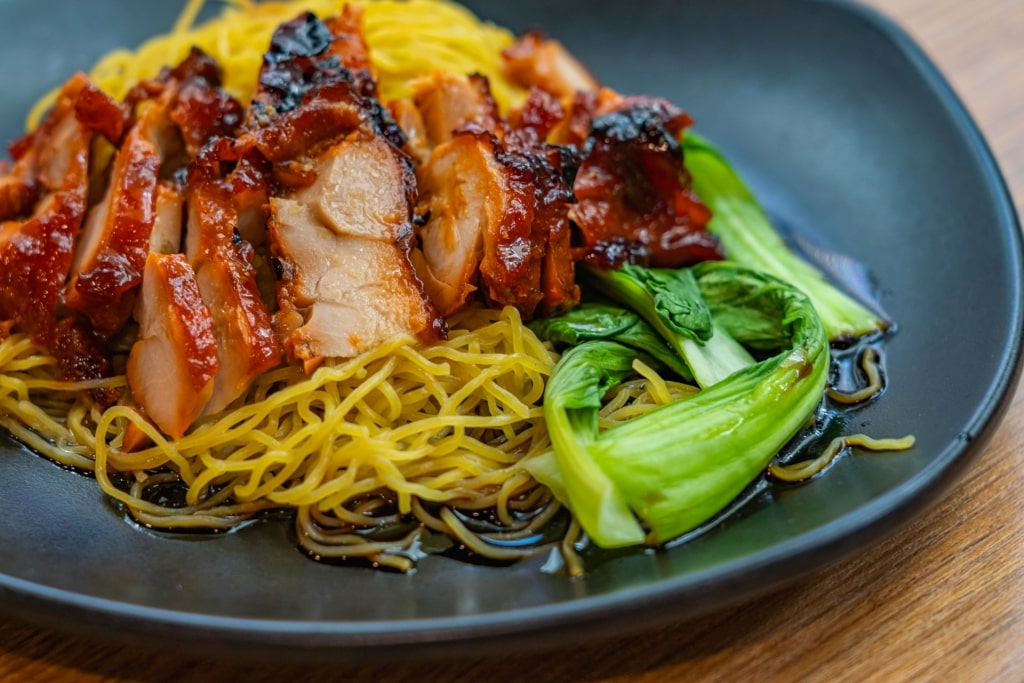
Char siu
Cantonese barbecue is justly renowned throughout the world. Char siu, or char siew as it is sometimes spelled in Singapore, in particular is a real delicacy. These gorgeously lacquered, slow roasted strips of pork line the windows and stalls of hawker joints in the Lion City.
Chefs marinate fatty cuts of pork in a sweet-salty sauce to add depth of flavor. Maltose sugars often add a glossy sheen and red food dyes add a distinctive coloring.
Char siu shines in a number of preparations around the city. Char siu bao, or steamed pork buns, make regular appearances on dim sum tables. Oftentimes, thinly sliced char siu is served on top of steamed rice or yellow egg noodles, either with or without broth.
Rojak
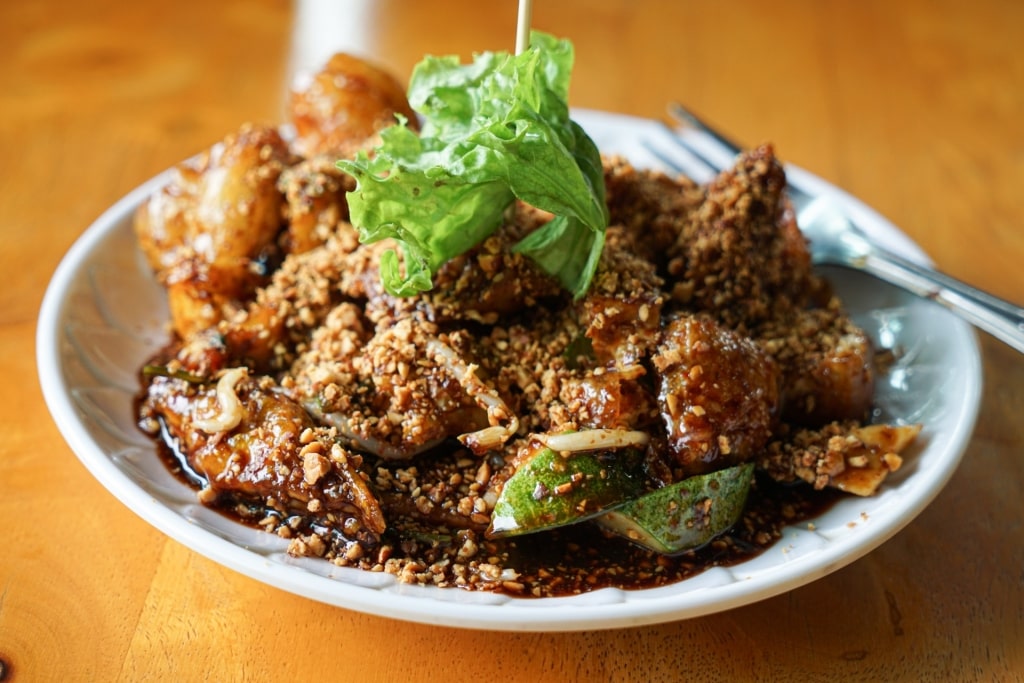
Rojak
Crunchy, sweet, sour, and sometimes spicy, this fruit salad makes for a perfect snack at any time of day. Like many of Singapore’s most beloved foods, rojak draws on multiple cultural traditions.The name comes from Malay and the dish bears a slight resemblance to Javanese salads.
Recipes for rojak vary by quite a bit from cook to cook. Typical renditions contain fruits, such as mangos, rose apples, and pineapple, as well as vegetables, such as bean sprouts or greens. The dressing often gets its sweet-tart kick from tamarind and palm sugar. Peanuts and shrimp paste add a note of umami.
One distinctive ingredient often added as garnish is torch ginger, also known as a ginger flower. This brilliant fuchsia flower adds a sour flavor and an aromatic note.
Oyster Omelet
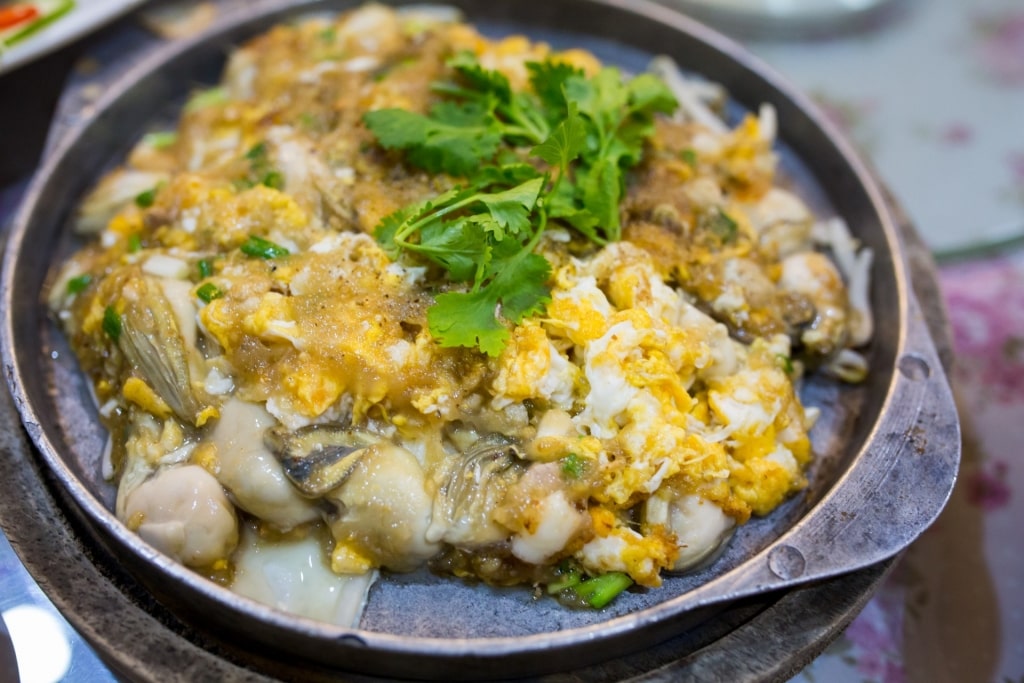
Oyster omelet
This hawker staple, which exists in various forms throughout Thailand, Malaysia, and other parts of Southeast Asia, has little in common with the classic French omelet. The bistro staple consists of a roll of barely set buttery curds.
In contrast, this dish contains fresh shellfish loosely bound in a chewy egg-rice flour batter. A blast over blazing-high heat gives oyster omelets their lacy, crispy edges, which taste even better when slathered with spicy sauce.
Bak Kut Teh
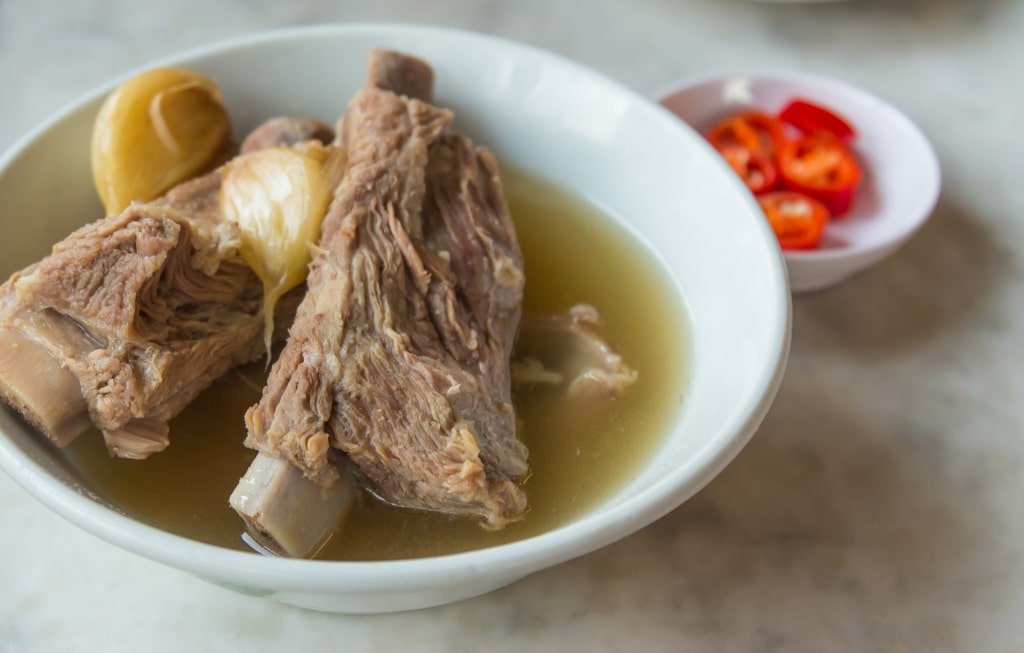
Bak kut teh
The heady aroma of cinnamon, star anise, and other spices perfumes this intensely savory soup. The peppery, pork rib broth simmers for hours, developing a profound depth of flavor in the process.
To that base, chefs might add mushrooms, greens, dried tofu, offal, or a garnish of fried dough, or youtiao. The dish has its roots in Singapore’s Teochew community, a group that immigrated from southern China, and is also popular throughout Malaysia.
Roti Prata
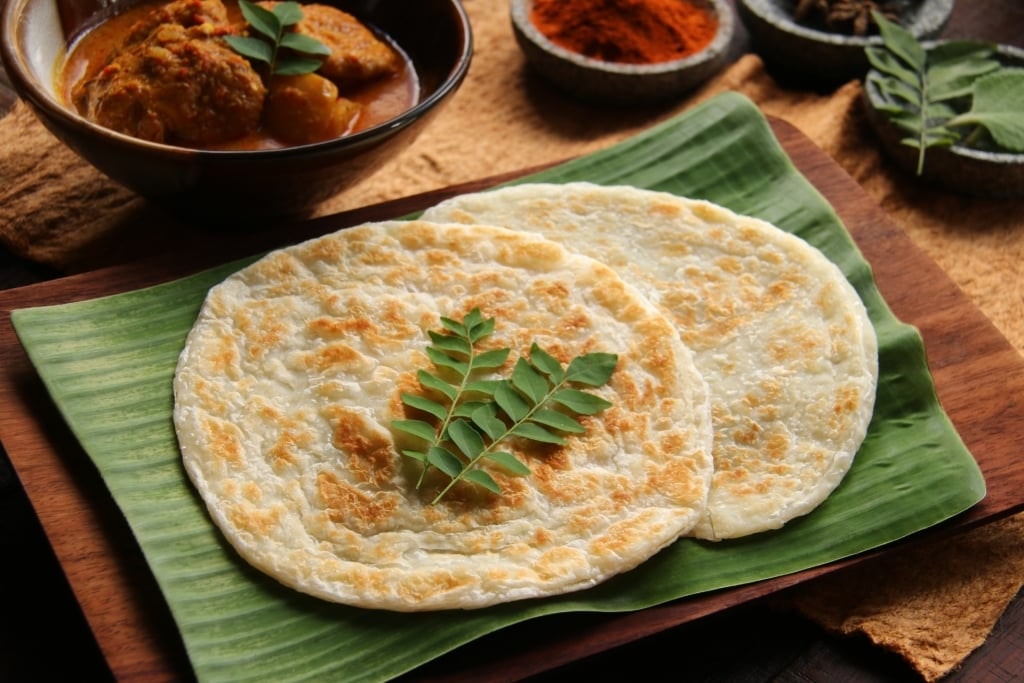
Roti prata
Keep an eye out for these flaky flatbreads sizzling on a griddle at any hawker center in the Lion City. Southern Indian immigrants brought a version of roti prata to Singapore generations ago. They’re delicious dipped into curries, but just as often served alone.
Oftentimes, roti prata come topped with an egg for a more fortifying snack. For a popular sweet variation, look for them topped with chopped banana and drizzled with condensed milk.
Satay
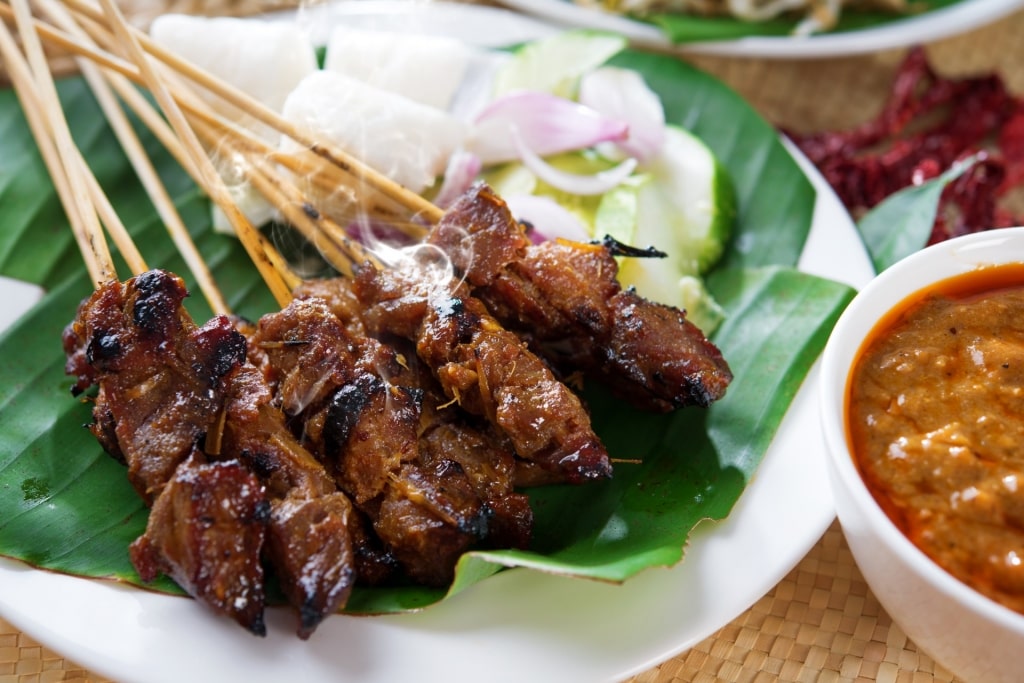
Satay
Ubiquitous in hawker centers around Singapore, satay is the best food in Singapore for an addictive snack. Look for skewers of chicken, pork, beef, or lamb charing over an open flame. Like Chinese chuan or Thai moo ping, satay was historically served from street food stalls and roving carts.
What separates satay from other types of skewered, grilled meats is the distinctive marinade. Turmeric, tamarind, soy sauce, and kecap manis may all be used to add color and depth of flavor. Dunk your satays in the chunky, sweetened peanut sauce on the side and wash it all down with an ice-cold Tiger beer.
Chendol
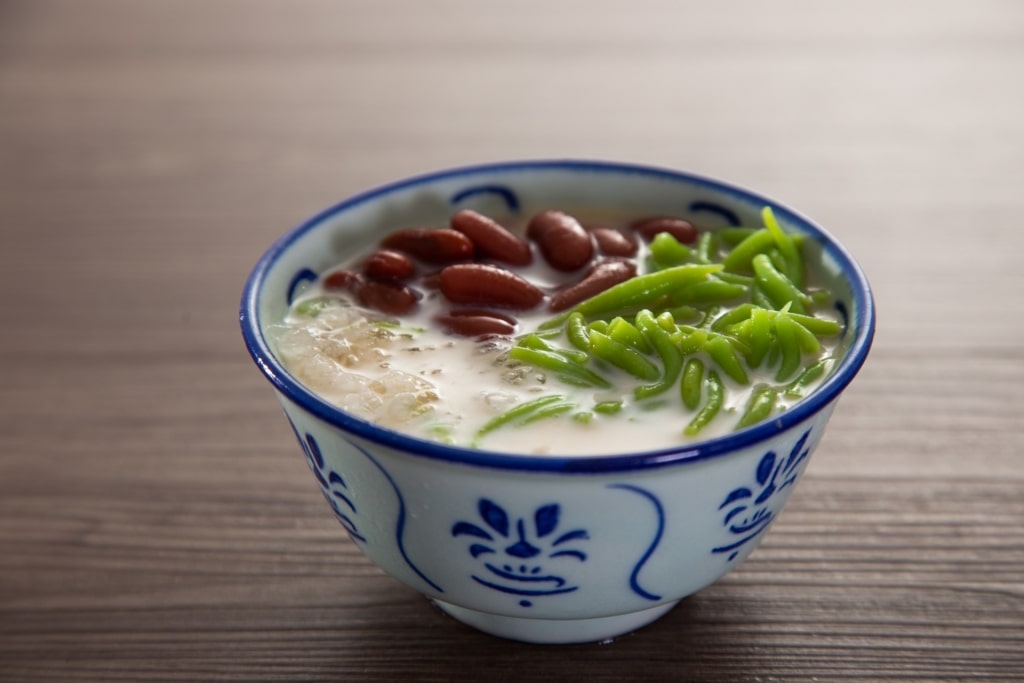
Chendol
With Singapore’s humid climate, it’s no wonder that cool, refreshing dishes are in such high demand. Given the cosmopolitan nature of the city-state’s dining scene, you can expect to find just about every frozen treat from Italian gelato to Japanese kakigori. None, however, are more beloved than Southeast Asia’s cendol.
Popular in all sorts of variations from Thailand to Malaysia to Indonesia, chendol, also spelled cendol, consists of vivid green rice flour jellies. That alluring shade comes from pandan, the same flavoring used in kaya jam. In bowls served in Singapore, these squiggly jellies rest in a noodle-like tangle in icy bowls of coconut milk and jaggery syrup.
A large part of what makes chendol so satisfying to eat are the toppings. Durian, pineapple, sweet red beans, jackfruit, and various jellies add bursts of texture and flavor.
Read: Three Days in Singapore

Singapore
Explore Singapore’s phenomenal food scene by visiting the Lion City on a cruise. Browse our Singapore cruises and book your next adventure today.
